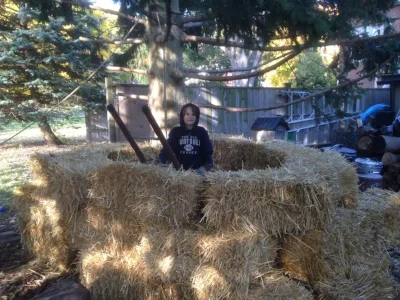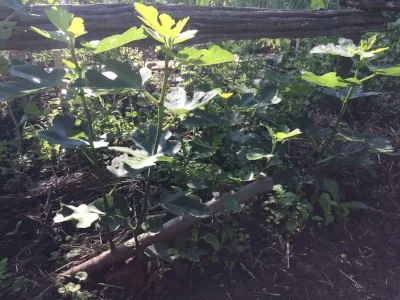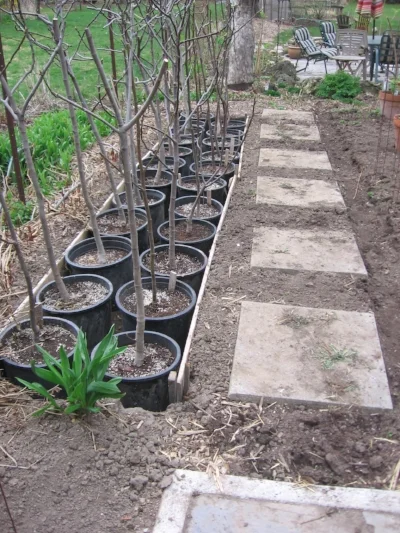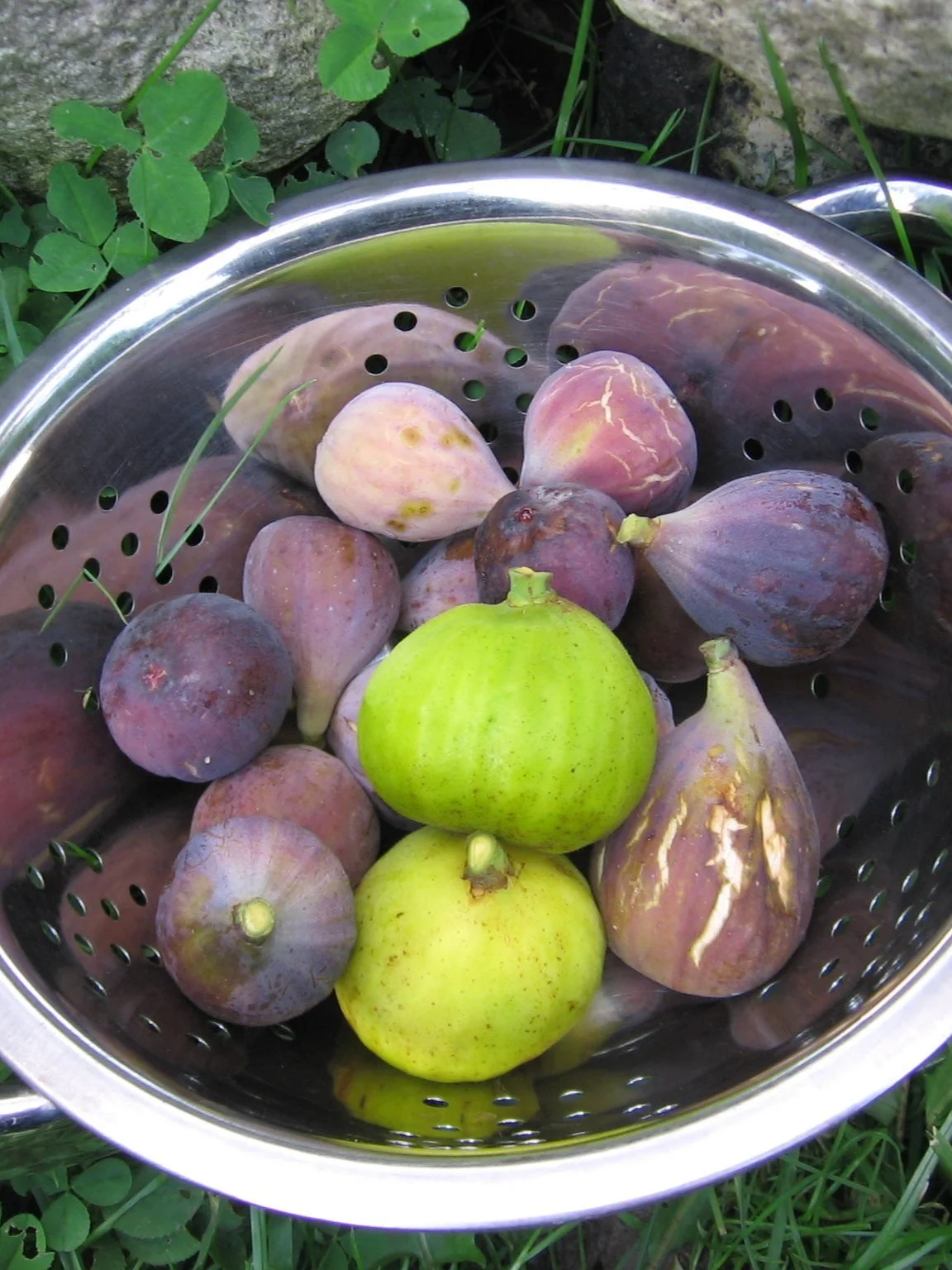Intro to How Figs Grow
Two things that make figs easy to grow: They are forgiving plants, and they go dormant.
By Steven Biggs
Figs Tolerate New Gardeners
Leaves are deciduous, which means they fall off when cold weather arrives.
In the book Grow Figs Where You Think You Can't, I repeat a simple message for readers: In places where figs don't usually grow, they are easy to grow.
One of the reasons for this is that that they're such resilient plants.
Here's what I say in the book:
Forgiving Plants
The first thing to remember about figs is that they are very, very forgiving plants. Remember that fig cutting I told you I took as a teenager? It languished under barely survivable conditions for 15 years until I gave it a proper spot.
They Want to go Dormant
The next most important thing about the way figs grow is that they lose their leaves after first frost. They WANT to go dormant. That means you can keep them over the winter even if you don’t have a bright, hot greenhouse. While they’re dormant, they don’t need light or much heat. Contrast this to lemons…
The large, lobed leaves grow on branches with grey bark. When cut, branches exude a milky white sap that can be irritating to the skin. Leaves are deciduous, which means they fall off when cold weather arrives. Unpruned, plants usually grow into a bush, but can be trained into small trees if that’s what you prefer.
Grow Figs, Even in Cold Climates
Read more about growing figs in cold climates in my article in Issue 201 of Fine Gardening magazine.
How to Grow Figs…Even in Cold Climates
Fine Gardening – Issue 201
By Steven Biggs
Read more about growing figs in cold climates in my article in Issue 201 of Fine Gardening magazine.
Step-Over Figs
I order straw bales for my kids to play with—they're like giant biodegradable Lego blocks. They all become mulch eventually!
By Steven Biggs
Straw for Kids and Figs
I USE LOTS OF STRAW in the garden. Last spring we got 30 bales. When I say we, I mean the kids and me. For the first while, the bales are all for play: giant biodegradable building blocks!
Over the summer, some of the bales break as the twine comes off. I use the loose straw for mulching.
Step-Over Figs
A step-over fig with a low, horizontal trunk that is easy to mulch and protect for winter.
In October, I lay full bales over top of fig plants that I'm growing as "step-over" figs. These plants have low, horizontal main stems.
I cut all of the branches from the main stem in the fall, making it easy to lay straw bales over the top.
With the step-over system, I select varieties that produce a good crop of "main crop" figs. These are the figs that grow on branches from the current season. New shoots can produce figs in one season.
The Challenge in my Garden
Under the straw bales: Step-Over figs that are tucked in for the winter.
So far so good, right? Sort of. The concept is sound—and the straw does a great job of protecting my fig plants.
But...this corner of my garden is low and the soil is slow to warm up in the spring. The result is that my step-over fig plants don't start growing early enough to ripen many figs.
Lesson learned. I've started step-over fig plants in a warmer spot close to my patio.
And the solution for the step-over figs in these photos? Growing figs in cold climates often requires some sort of season-extending technique... And I think that the solution for me might be to install a low hoop-house over top of these figs in the spring. It will warm up the soil and get the plants out of dormancy sooner.
Fig Hedge
A fig hedge for a cold climate!
The potted fig plants are in a trench. With the addition of a layer of mulch, the ugly pots are out of sight.
Figs are beautiful plants, with large, lobed leaves and smooth, grey bark.
The fig hedge will be beautiful. (And delicious!)
In November, once the trees are dormant, I will lay them over and cover them with mulch to protect them from extreme winter temperatures. (Any that don't fit in the trench for the winter will go into my garage.)
Hiding Pots with Potted Figs
Trench for potted figs. Once backfilled with mulch, the pots and the boards lining the trench will not show.I sink my potted fig plants part way into the ground so that they can root into the surrounding soil. This prevents plants from tipping over in the wind, and allows them to scavenge food and nutrients from the soil.
Equally importantly, sinking the pots helps to hide them!
But digging holes for the pots every year is a lot of work. And...I want the pots completely out of sight.
So this year, I've made a permanent trench. After I put the potted fig plants into the trench, I'll simply backfill with wood chips or bark.
Advantages:
Pots are below grade and completely hidden under mulch
Pots will stay cooler and dry out more slowly
In autumn, wood chips are easy to remove when it's time to remove the trees for indoor storage
Stay tuned...I'll report back on how well this works this autumn.
Extending Fall Fig Harvest
Extend fall fig harvest with a plastic tunnel or greenhosueFIG GROWERS IN TEMPERATE CLIMATES know that lots of the figs on their plants won’t ripen before the first fall frost causes the plant to go dormant. Such a waste!!
Some fig lovers protect fig plants from fall frost to allow more fruit to ripen before the tree goes into dormancy.
An unheated plastic greenhouse or tunnel can raise the air temperature considerably—delaying dormancy, and ripening more figs. Yum!
Video: How to Grow Figs
If you think it's too cold to grow figs where you live, watch this video.
Maybe you can grow figs, even if they are not winter hardy in your area.
Fig trees are very forgiving plants that will take a lot of abuse.
In this video, I explain how to grow figs in places where they wouldn't normally survive the winter. It's not difficult! And you don't need a greenhouse to do it.
This is a talk I gave at Richter’s Herbs in 2013 about how to grow figs in cold climates.
A-Frame for Winter Fig Protection
Last week, my boys and I stopped by Adriano's for a visit.
Adriano grows it as a multi-stemmed bush, cutting out stems that become too big and, therefore, less flexible.
His potted trees were outside; still dormant, but buds swelling nicely.
He showed me his in-ground Desert King fig that overwinters covered with an A-frame.
Alternative to Burying Your Fig
Thinking of growing an in-ground fig, but don't want to chop the roots and lay it flat?
The A-Frame method is another approach to overwintering figs if you're in zone that's too cold for figs to survive unprotected.
Uncovered for Spring
He says this big in-ground Desert King fig has been there for about 40 years.
He grows it as a multi-stemmed bush, cutting out stems that become too big and, therefore, less flexible.
When winter comes, he bends over the branches, and then places an insulated A-frame (made from wood and styrofoam) over the top.
Through Summer
It never fully stands upright, but instead is bent over, so that it looks as if it is praying!
Figs in Garden Making Magazine

Get the latest issue of Garden Making magazine, which has my article about growing figs in cold climates. The magazine is on shelves now, or you can order online. Visit the Garden Making website.
















